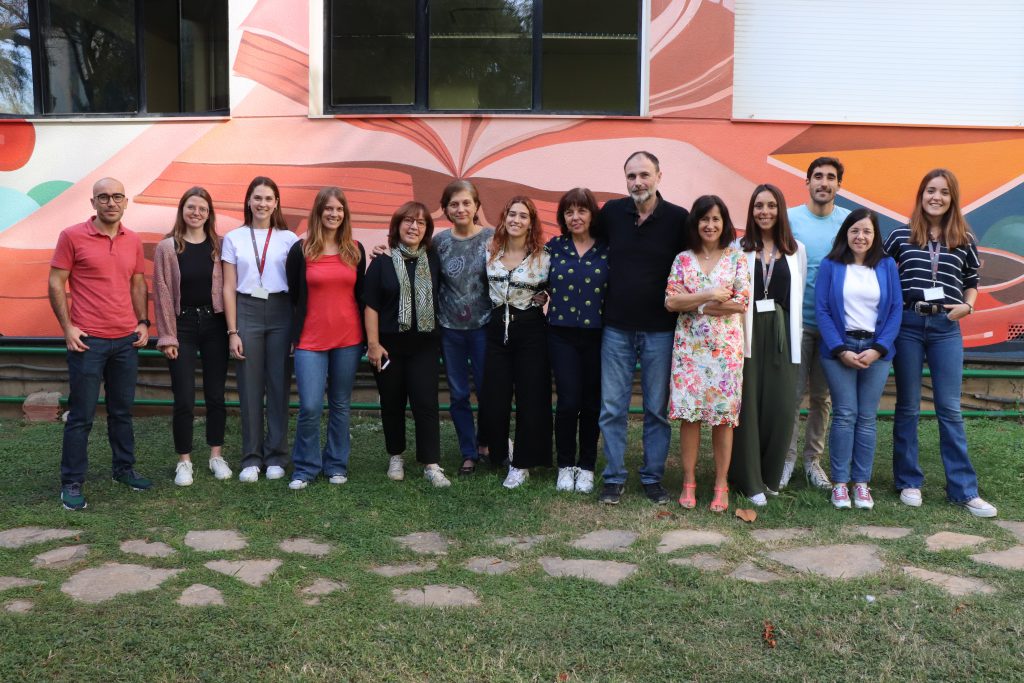
Researchers from IQAC-CSIC advance towards faster detection and treatment of cystic fibrosis and rare respiratory diseases, improving patient outcomes.
28 February 2024, IQAC-CSIC (Barcelona)
Cystic Fibrosis (CF) is a progressive autosomal recessive disease. It is caused by a mutation in the gene encoding the Cystic Fibrosis Transmembrane Conductance Regulator (CFTR) protein, disrupting its exocrine activity. While CF affects various organs, its impact on the lungs is particularly severe. This disease leads to the accumulation of thick, sticky mucus, obstructing airways and trapping bacteria, resulting in significant infections and extensive lung damage. Consequently, individuals with CF are highly susceptible to respiratory tract infections. In this regard, Pseudomonas aeruginosa and Staphylococcus aureus are among the most prevalent pathogens.
Early detection of P. aeruginosa and S. aureus in CF patients is crucial to eradicate these pathogens before the development of chronic colonization. Moreover, even after the chronic colonization occurs, proper control of the bacterial burden is necessary to minimize progressive lung deterioration. Currently, the gold standard for detecting these bacteria involves conventional bacterial culture methods. However, as in any infectious process, time is of the essence, and these techniques typically take 2 to 3 days to be confirmed. Hence, there is an urgent need to develop faster, more sensitive, and specific diagnostic methods.
In this context, the Nanobiotechnology for Diagnostics (Nb4D) group at the IQAC-CSIC, in which the Unit 2 of NANBIOSIS (CAbS) is integrated, focuses much of its research on bacterial communication systems, specifically Quorum Sensing (QS).
Quorum Sensing is a fascinating mechanism that allows bacteria to react to the presence of other bacteria. In other words, QS regulates bacterial gene expression in response to fluctuations in microbial population density. QS-sensitive bacteria produce and release signaling molecules called autoinducers (AIs). Just the detection of a minimum concentration of AIs triggers radical changes in gene expression, activating processes such as biofilm formation or virulence.
The QS system is well-characterized for both P. aeruginosa and S. aureus. This makes the detection of these AIs, or even QS-regulated virulence factors (VFs) (such as the aforementioned biofilm formation), a promising approach for bacterial identification. As a consequence, by knowing how AIs and VFs work, doctors can predict how an infection may progress. Much like a bacterial molecular fingerprint.

Thanks to their solid know-how, the Nb4D group has developed specific antibodies against AIs and VFs of both bacterial species. With that under their belt, this group has designed ELISA assays capable of detecting these molecules. Then, using this popular technique, they managed to run detection tests in approximately 2 hours, both in bacterial isolates and sputum human samples.
Additionally, our researchers are evaluating these antibodies as therapeutic agents using cell cultures, using their antibodies to block dangerous VFs and AIs. These studies are yielding promising results in mitigating the cytotoxic effects caused by the aforementioned VFs and AIs.
Detecting Alpha-1-antitrypsin protein
In addressing rare diseases related to the respiratory system, the Nb4D group is also involved in developing a device for detecting Alpha-1-antitrypsin protein. The genetic deficiency of this protein causes damage to the lungs and liver, affecting 1 in every 2500 individuals in Europe. Rapid and highly sensitive detection of Alpha-1-antitrypsin levels should enable immediate treatment initiation, thereby preventing potential complications.
This research line represents an example of clinical cooperation. It involves collaboration with clinical personnel from Hospital del Mar, Hospital Germans Trias i Pujol (Barcelona), and Hospital Son Espases (Mallorca). In addition, the interest has peaked to the point of attracting funding such as State ‘Plan Estatal de I+D+I’, as well as a grant from the ‘Fundació La Marató’ of TV3, among other sources.
Through innovative diagnostic and therapeutic approaches, the Nb4D group is dedicated to improving outcomes for individuals affected by rare respiratory diseases. This involves their work in cystic fibrosis among other conditions, pushing forward the understanding and management of these challenging diseases.
This article is in the context of Rare Disease Day 2024. To stay up to date, visit our news section here.
Additional information:
The goal of NANBIOSIS is to provide comprehensive and integrated advanced solutions for companies and research institutions in biomedical applications. All of this is done through a single-entry point, involving the design and production of biomaterials, nanomaterials, and their nanoconjugates. This includes their characterization from physical-chemical, functional, toxicological, and biological perspectives (preclinical validation).
In order to access our biomedical Solutions, apply here.
NANBIOSIS has worked with pharmaceutical companies of all sizes in the areas of drug delivery, biomaterials and regenerative medicine. Here are a few of them:









